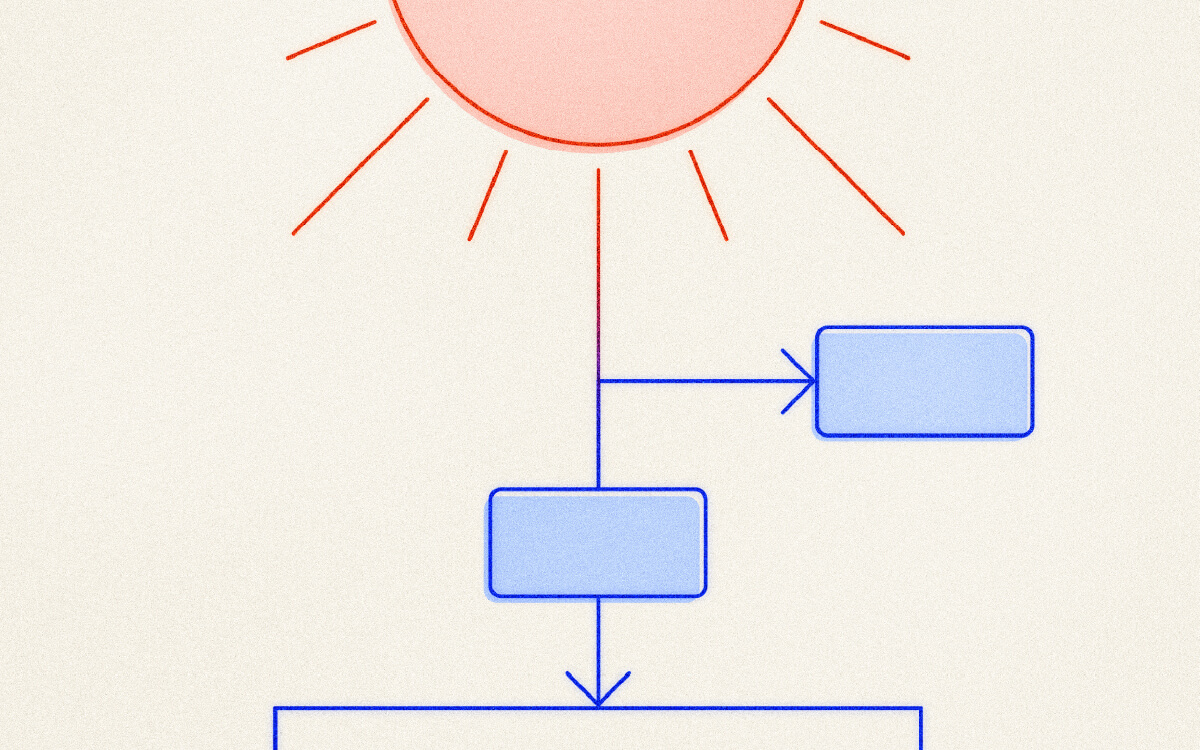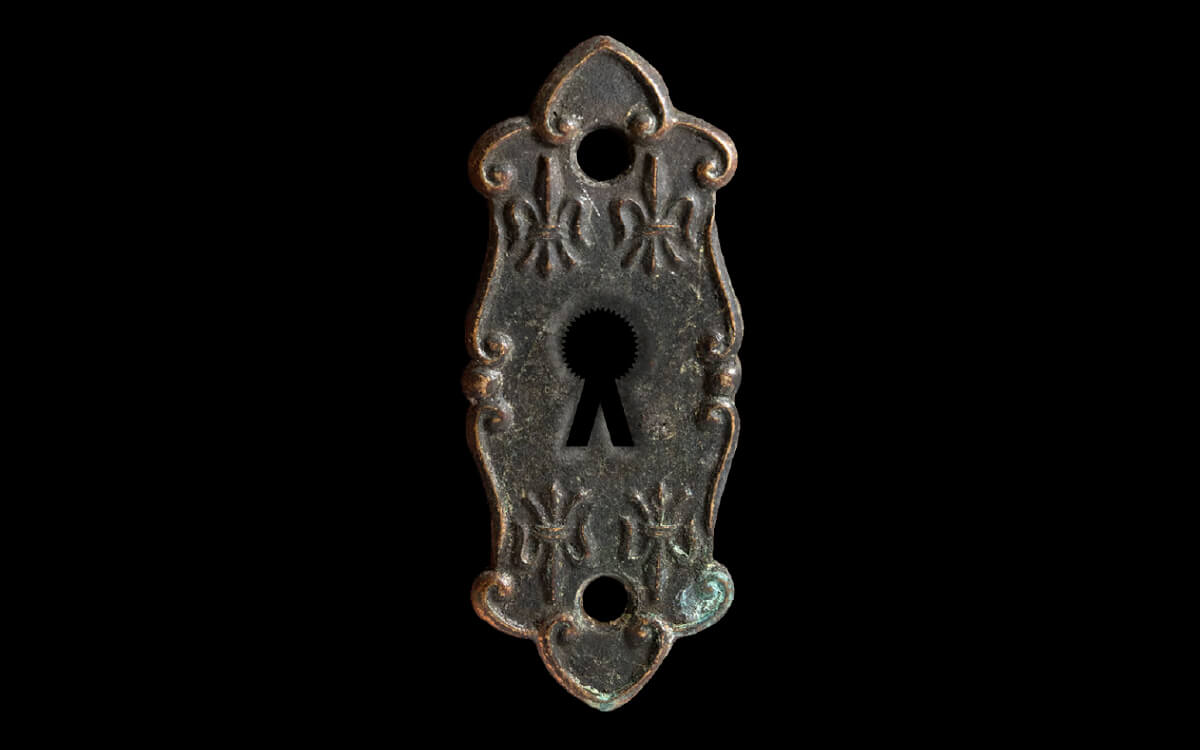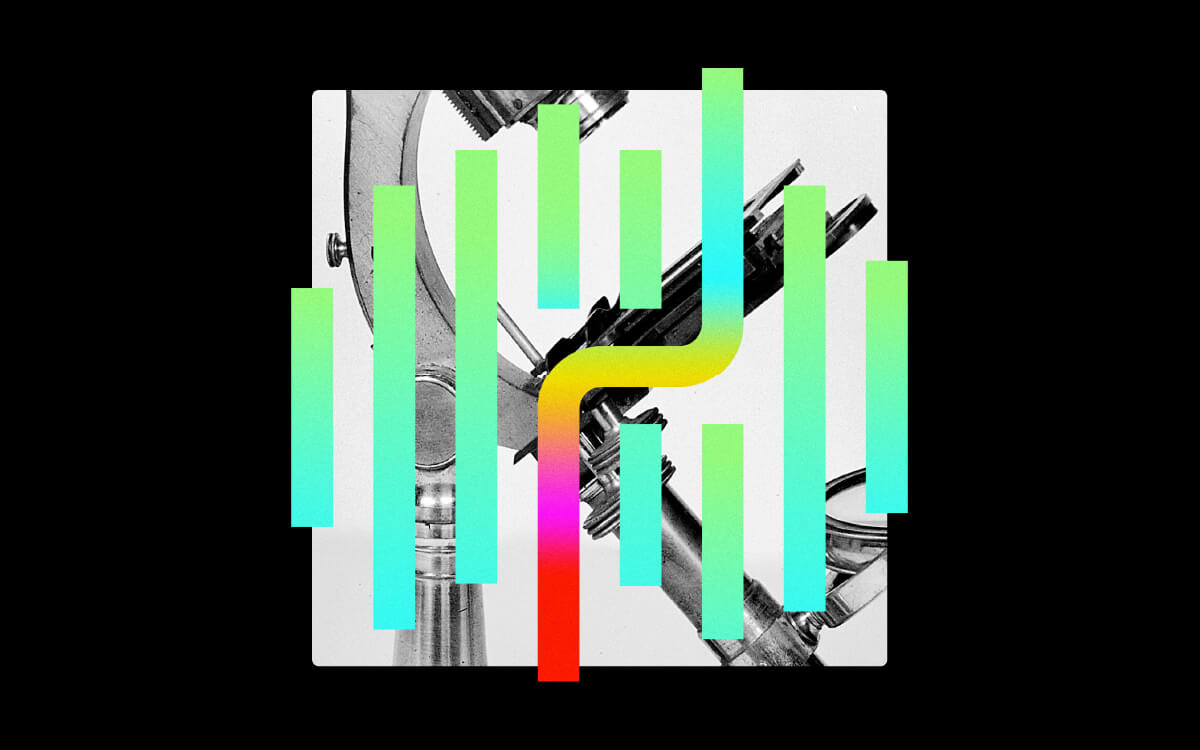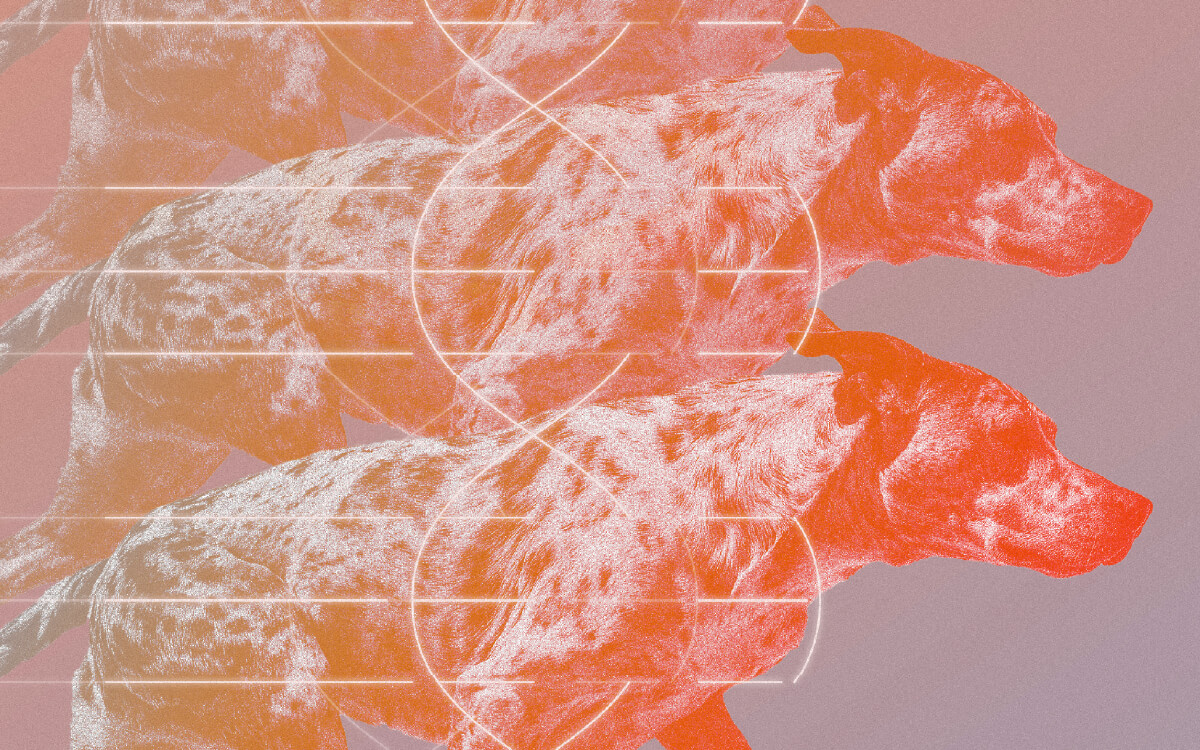NOTES
We believe that accurately identifying and articulating the most critical unmet needs in health is the first and most fundamental step in deriving solutions that positively impact health at scale. A meaningful understanding of such needs requires a broad view, one that embraces how questions of science and technology are tied inextricably to economic, policy, and social circumstances and histories.
Here we write and publish on human health and animal health.

The last Note of the year is traditionally an opportunity for us to reflect one more time on the topics we covered throughout the year. This year our Notes were again organized into three broad themes: Theoretical Concepts, Rapid Innovation Challenges, & Historical Context and Necessary Mechanisms.
Notes on Engineering Health

The error bar is one of the most ubiquitous yet least understood features of modern research. It is ultimately a small mark with an enormous burden: to remind us, in every scientific chart and graph, that knowledge is hard-won, that certainty is rare, and that acknowledging what we don't know is the beginning of wisdom.
Notes on Engineering Health

In 300 BCE, the Greek philosopher Aristotle described dogs suffering from “a madness” and noted that other animals became similarly diseased if bitten by affected dogs. He was recounting rabies, an acute, progressive, ultimately fatal inflammation of the brain and spinal cord, and one of the oldest recognized zoonotic diseases.
Notes on Animal Health

Protocols are simultaneously conservative and revolutionary—they preserve the accumulated wisdom of communities while enabling radical departures from conventional thinking. In an era when expertise itself is under assault, when the very idea of authoritative knowledge faces skepticism, protocols offer something invaluable: a transparent pathway from question to answer, from hypothesis to conclusion.
Notes on Engineering Health

In 2008, a small biotech company called Smart Genetics was quietly shuttered after just a few months of operation. Their crime? Offering direct-to-consumer genetic tests that could predict a person's risk of developing Alzheimer's disease. The company hadn't violated any FDA regulations or committed scientific fraud. Instead, they had run afoul of something far more unusual: the moral convictions of a neurologist named Alan Roses, embedded in the fine print of a patent license.
Notes on Engineering Health

Whales, elephants, bats and naked mole rats all have relatively long lives but rarely develop cancer. Understanding the mechanisms by which these species protect themselves against cancer may give us new approaches to treating and preventing cancer in humans and companion animals.
Notes on Animal Health

Recursion is simultaneously a mathematical concept, a computational strategy, a biological principle, and a way of understanding complex systems. As a fundamental principle, recursion manifests in numerous contexts, representing a powerful mechanism for generating complex structures, processes, and systems through repeated self-similar patterns. At its core, recursion demonstrates how simple rules, when applied repeatedly, can create intricate and sophisticated phenomena.
Notes on Engineering Health

The flu, as most all of us know all too well at this time of year, is an acute viral infection of the respiratory tract. The story of the flu is, in many ways, the story of human civilization itself: a tale of migration, mutation, and the unrelenting tension between our social nature and our biological vulnerabilities.
Notes on Engineering Health

When we visit a veterinary clinic today, the doctor examining our pet will likely be female because women now make up the majority of the veterinary workforce. According to the American Veterinary Medical Association (AVMA), in 2023, of the 127,131 employed veterinarians in the United States, approximately 67% (85,337) were female and 32% (41,253) were male. The predominance of women in the field, however, is a relatively new development.
Notes on Animal Health

A recent commentary in the journal Neuron titled “The unbearable slowness of being” estimated that the speed of information flow in the human brain is just 10 bits per second (bps). The Neuron paper’s authors estimated that the millions of photoreceptor cells in a single eye can transmit 1.6 billion bps. In other words, we sift about one bit out of every 100 million we receive.
Notes on Engineering Health

From the minute an organism is born its cells and tissues are subject to an array of insults and injuries, some small and some major. While we have made progress on numerous fronts to prevent, treat, or slow many diseases, the holy grail remains regenerative therapies designed to replenish and repair tissue or organs impaired by disease, trauma, or congenital defects.
Notes on Animal Health

In the world of entrepreneurship, much of the game is played in an environment of uncertainty rather than risk. True uncertainty involves situations that are non-computable because we lack the information to calculate odds accurately. This is the land of the unknown and unknowable in which probabilities cannot be meaningfully assigned and thus the idea of probability itself becomes meaningless.
Notes on Engineering Health

Because the lifespans of our domestic pets are so much shorter than ours, inevitably pet owners experience the heartbreak of their death. But what if you could give your pet immortality, well, a type of immortality? Science has now given us the ability to clone our pets, and in doing so we can keep them alive, at least genetically, forever. But should we?
Notes on Animal Health

Pets have never been more popular. It is estimated that 66% of U.S. households (86.9 million homes) own at least one pet, while globally approximately 33% of households keep one or more. Unfortunately, for a significant portion of the human population, pets come with a significant downside: allergies. The Allergy and Asthma Foundation of America estimates that 10-20% of the world’s population is affected by dog and/or cat allergies.
Notes on Animal Health

Slime molds are eukaryotic organisms that are neither plants, animals, nor fungi. They have a complex life cycle that includes both single-cell and multicellular stages. They are commonly found in moist, shaded areas like forest floors feeding on microorganisms and dead plant material. And, despite lacking a brain or nervous system, slime molds can solve the Traveling Salesman Problem, one of the most notorious optimization challenges in computer science.
Notes on Engineering Health

Over the past year, I’ve been collecting papers with surprising results about the success of machine learning in biology, ones that run against the grain of popular conceptions, that throw into question whether our models are learning biology at all. Papers that demonstrate models fixating on patterns in datasets that are too complex for a human to identify that turn out to be noise, not signal.
Engineering Biology

With the Paris 2024 Olympics rapidly approaching, many of us are looking forward to watching the best human athletes in the world compete for their home countries. As amazing as many of these athletes are, one wonders how other animals, specifically other land mammals, might compare.
Notes on Animal Health

As part of our notes of the US healthcare system (see our earlier pieces on payers, Pharmacy Benefit Managers (PBMs), and providers), today we offer some notes on pharmacies. How did their role expand from the first apothecaries to the modern tech firms tasked with the safe distribution of drugs to the public?
Notes on Engineering Health

The early pioneers who first used radioactive compounds in medicine died young and badly damaged—Marie Curie died of aplastic anemia in her sixties; Henri Becquerel died of a heart attack in his fifties, his skin covered in burns from radioactive emissions; Irène Joliot-Curie died from acute leukemia; and her husband, Frédéric Joliot-Curie, from liver disease. Undoubtedly, they were afflicted by their research, finding and analyzing radioactive elements, which opened up an entirely new field of study: radiopharmaceuticals and nuclear medicine.
Notes on Engineering Health

The hardest problem in biopharma today is picking the right targets. Our ability to modify biology has increased exponentially over the past decades. No longer is it a question of if we can hit a target (or a pathway) with some compound. Today, we can hit nearly any biological target with multiple different modalities from traditional small molecules to antibodies to interfering RNAs to cell and gene therapies and beyond. The key questions today are what should we hit and how.
Engineering Biology

As medicine has grown more complex and costly, the way to organize its delivery has had to adapt. How has the work of delivering care evolved, how has it been integrated with the health insurance system, and what trends have emerged that point to ways in which hospitals may continue to evolve?
Notes on Engineering Health

Over at the new OpenProtein.ai blog, Tristan Bepler and I wrote about the seemingly mysterious power of Deep Protein Language Models. Not only do they identify related proteins, they predict functionality, stability, and immunogenicity, in many cases “out-of-the-box.” Why should this be?
Engineering Biology

Scientific publications have been the lingua franca of scientific discovery and knowledge, the edifice on which trust is built. To understand how academic publishing got to the structure we know today and think of ways to improve it, it is helpful to understand the story of scholarly publishing, the technological advances that occurred along the way, and the forces and incentives that shape current behaviors and challenges.
Notes on Engineering Health

For many of us, our pets truly are part of our family. They share our homes, our beds, go to work and on vacation with us. They entertain us and protect us. They will be by our sides and on our laps as we celebrate this holiday season with family and friends. We keep our pets close with little concern that they might share fleas, ticks, and intestinal parasites with us. That, however, has not always been the case.
Notes on Animal Health

The late neurologist Oliver Sacks had his fair share of experience with experiments on chemical compounds altering brain functions. He wrote beautifully in books and articles about how he experimented on himself both to relieve pain and to explore unvisited corners of his self. He was a keen observer of how mental diseases work and what is available to treat them. How did we get to produce such neuro-active compounds? Are the nervous system and the brain like any other organs? Where is neuropharmacology going?
Notes on Engineering Health

The leaves are falling in the northeast, which can only mean one thing—it's open enrollment season. Time to wade through excruciating details in order to choose the level of health coverage that you deem necessary, covering every possible (high) price point. Why do people in the United States do it this way?
Notes on Engineering Health

The combination of years of “Big Data” hype and obviously flawed inferences, of overpromising and under-delivering, has led to pervasive online tracking and a miasma of distrust. It is simultaneously too difficult to deploy novel consumer-facing information technology and avoid the sale or at least use of personal information.
Engineering Biology

The story goes that an angry father confronted Target employees after his daughter was mailed coupons for maternity products unnecessarily, only to find out later that she was pregnant. A triumph of big data combined with statistical learning, and a creepy portent of the future, right? That’s how the story went at least.
Engineering Biology

In the US, the number of people alive aged 65 or older increased from 4.9 million (4.7% of the total U.S. population) in 1920 to 55.8 million (16.8%) in 2020. While this demographic shift is a testament to progress in healthcare, and a decrease in fertility rate, it also presents unique challenges, including the increasing prevalence of frailty among older adults…
Notes on Engineering Health

My focus in writing over the past three months has been the interplay between powerful new computational methods, digital technologies, and operational processes. It began with the observation that successful Machine Learning (ML) integrated biopharma companies have a moat in data generation and the scientific application of computation to these data—not in machine learning itself. Operational excellence is requisite for these companies, not merely a nice-to-have.
Engineering Biology

From the organism to the organ, the cell to the organelle, the molecule to the atom, biologists have descended into the living matter not only describing it but seeing and photographing it. Whether to convince by their explanatory power or compel by their beauty, images of biological phenomena have transformed how we approach the field.
Notes on Engineering Health

I was on a panel about digitization and the data revolution at the annual Academy of Management meeting last weekend. My co-panelist and I were there to give an operational perspective on how data are used in biopharma for everything from R+D to commercialization and how it compared to the empirical studies from a variety of industries presented earlier in the session.
Engineering Biology

The integration of Machine Learning (ML) into scientific work exists on a continuum between whole-scale replacement of human processes and providing inputs to complement the judgment of a human arbiter. As I’ve argued previously, current models are insufficient at best for fully substituting human knowledge in biology for all but base-level tasks…
Engineering Biology

While we have written about other aspects of climate change in these notes before, we have not yet addressed the core aspect of climate change: the heat itself. What are the consequences of too much heat on humans, animals, and societies? In other words, how hot is too hot?
Notes on Engineering Health

The past weeks have seen a flurry of articles debating the efficacy (and proof thereof) of “AI” in drug discovery and biotech writ large, kicked off by a large layoff at Benevolent, an “AI” drug developer. I would argue the lesson of the recent AI boom in biopharma is a simple one: If you don't have novel and effective science in the first place, no amount of data science will save you: Data Science and Machine Learning* (hereafter ds/ml) will be most successful in biology where they sit atop transformative science that needs no special analytics.
Engineering Biology

Back in 2017, when I was just starting to build out data science at Indigo, Tristan Bepler joined us as a summer intern. We had a large and growing amount of sequencing data from microbial communities both their composition from marker genes and whole genomes of organisms of interest. Both of these datasets resisted conventional methods. The mathematical modeling of microbial communities remains underdeveloped with heuristic methods that produce nonsense and potentially more correct ones that are difficult to implement.
Engineering Biology

I’m excited to announce I’m joining Digitalis Ventures as an Entrepreneur-in-Residence. The arc of my career has been driven by a fundamental belief that we can identify emergent simplicity from the complexity of biology, provided enough data and algorithms that model the underlying science. At each step along the way, however…
Notes on Engineering Health

“Xenotransplantation is the future, and always will be”. The apocryphal quote by the late Stanford surgeon and heart transplantation pioneer Norman Shumway highlights the hopes and difficulties of this endeavor. Xenotransplantation, or transplanting an organ from one species to another, concentrates many biological challenges and some thorny ethical considerations.
Notes on Engineering Health

The hope with Machine Learning has long been that we can eliminate complex, slow, and expensive physical processes with accurate predictions, inferred directly from data. As I’ve written previously, the complexity and scarcity of data make supervised learning like this less relevant in problems of biology. Unlike internet companies, generating reams of labeled data daily, our experimental throughput is orders of magnitude lower and our data modalities considerably more complex.
Engineering Biology

Where does Machine Learning belong in biology? Nearly all successful efforts fall into one of three categories: Exploration—Summarizing large complex datasets that cannot be fathomed by the human mind: gene sequences, chemical structures, images, etc and enabling scientists to explore them. Scaling—Automating, standardizing, and debiasing heuristics and calculations. Prediction—Estimation of how a complex process will perform on a new element.
Engineering Biology

Decisions in times of crisis can have long-lasting effects on an entire system, and be hard to change when incentives created by short-term decisions then become deeply entrenched. One perfect example of this phenomena is the health insurance system in the United States. Why does your employer pay for your health insurance? Is this a good thing?
Notes on Engineering Health

We don’t know what the hard problems are going to be. Most of us were trained as academic scientists in a culture of finding winding paths through the dark forest of the unknown. Today, we are much closer to engineers — using data and computation to industrialize the production of knowledge. Biology presents an endless series of learning and inference problems for us to solve.
Engineering Biology

“The role of the infinitely small in nature is infinitely large.” Louis Pasteur. Fermentation is the first example of biotechnology in human history. While spontaneous fermentation predates the human species, the earliest human efforts at fermentation date from the Neolithic period (7,000 to 1,700 BCE)…
Notes on Engineering Health

How does data science fit into the biopharma tech stack? The analytical operations involved are certainly more complex than the transformation and aggregation of data. This might suggest that data science is an artisanal, intellectual operation built off of the core data repository; in essence, an extension of laboratory science to computation. While tempting, this pattern only leads to confusion, frustration, and a misuse of human and silicon capital. Just as we are industrializing biological discovery and drug development, so must we with data science.
Engineering Biology

Technology in a biopharma company tends to grow by accretion rather than design. Tools and systems are brought in house as functions are brought on line. LIMS comes with the establishment of a lab, a compound registry with the first experiments with small molecules, a chem informatics tool when it’s time to start digging into SAR. Growth reflects staffing and capabilities — much as you don’t hire a medicinal chemist until it’s time to design small molecules, you don’t bring in the systems they would use until the function is present
Engineering Biology

Capturing and recording all relevant data is only half the battle. We then need to make it useful. In practice, we will have a deluge of information, much of which will be hard to parse without the relevant context: high throughput instrumental recordings, metadata tables, and the tracing of samples throughout laboratory workflows.
Engineering Biology

What do we need to generate data at scale? Practically, we need tools to allow us to run experiments: laboratory informatics, automation, and data capture. More is needed in order to always be performing the key experiment. We need to be able to design new experiments based on results as they come in, not laying out ten thousand in advance and waiting a month. These are fundamentally data problems, yet we do not have systems designed to enable their solution.
Engineering Biology

In mid 2017, my data science team was tasked with building out a new genome assembly and annotation pipeline that could cover the vast expanse of fungal and bacterial diversity to support our development of novel microbial products. Our company was engaged in bioprospecting of microbes from sites across the US. Back in the lab, we were isolating, identifying, and then assaying a previously unmeasured wealth of biological diversity.
Engineering Biology

So where do we begin? With a hypothesis and a key set of experiments. From there, we must process the data, analyze them, and make decisions. If we are lucky enough to have seized on a real insight, there will be the immediate paired questions of replication and scale. How do we confirm these results and generalize beyond? To properly modify a system, as in drug development, we will need to move from science to engineering, and work with a myriad of slightly different experiments to arrive at the one we can use to, say, improve human health.
Engineering Biology

There’s been an exceptional amount of talk about and investment in learning from data in biology, especially with the advent of effective ML systems. The ability to quantitatively model and learn from data at scale is real: look at the continued progress in protein structure prediction in CASP. Every biopharma company now has a data science org with diverse operational models from centralized to distributed, and there is continual talk of innovation and AI.
Engineering Biology

The role of scientists, and biologists in particular, has been to describe possible futures, predict the likeliest path to get there (through deterministic models, for example), confront the reality of where those paths actually lead, then revise their hypotheses and carry on…
Notes on Engineering Health

Since the onset of the Covid-19 pandemic in March 2020, the march of crises across the front pages of the world’s newspapers has been relentless. Myanmar. Afghanistan. Ukraine. Omicron. Monkeypox. Drought. Recession. We have reached the point where crisis seems to be an endemic state of affairs. Is this the result of an increase in communication via digital tools, or are the risks we are facing today of a different nature than before?
Notes on Engineering Health

In order to capture the awe-inspiring photographs recently taken by the James Webb Space Telescope, NASA scientists and engineers spent 30 years and $10 billion figuring out how to tightly pack dozens of mechanical limbs and instruments into a package that could be safely delivered to the second Lagrange Point, almost one million miles from the Earth in the exact opposite direction from the sun, and then carefully unfolded and deployed…
Notes on Engineering Health

Ideas of the symbiosis between biological life and information provide a provocative new way to explore more deeply not just the intersection of life sciences and data sciences, but also our understanding of social, economic, and cultural determinants of health. These are themes we expect to continue to explore in our work for years to come.
Notes on Engineering Health

Aging can be defined by sequential or progressive changes in an organism that lead to an increased risk of debility, disease, and death. It is actually the major risk factor for most pathological conditions that limit health span and promote chronic disorders including immuno-senescence, cardio-metabolic disorders, osteoporosis, sarcopenia, arthritis, cataracts, neurodegenerative diseases, and most cancers…
Notes on Engineering Health

Although Watson and Crick famously solved the structure of DNA in 1953 from groundbreaking crystallography work by Rosalind Franklin and Maurice Wilkins, the ability to “read” or sequence DNA was not scalable until the invention of the Sanger sequencing method in 1977. Sanger’s innovation and the ones that followed slowly paved the way to today’s large-scale genome sequencing, with the current state of technology at each step largely determining the problems the scientific community was then able to focus on.
Notes on Engineering Health

The idea of a fully deterministic world held sway in the West until very recently. While tools to describe the unknown were developed in the 16th century when Italian mathematicians began to formalize the odds associated with various games of chance, it was not until the early part of the 20th century that the formal analysis of randomness and the mathematical foundations for probability were introduced, leading to their axiomatization in 1933…
Notes on Engineering Health

Human breastmilk is a living, dynamic fluid that supports the optimal nutrition of infants. It has an incredibly wide range of nutrients, immune factors, hormones, and metabolites. While many of these components are stable during lactation, some vary significantly in response to maternal diet, infant health, time of day, or whether the meal is starting or ending. In many ways, human milk is the ultimate personalized nutrition.
Notes on Engineering Health

Another year ends and instead of writing about the many challenges in front of the world at the moment which we thought did not carry a very positive message for the festive season, we decided to look back on the subjects we covered in the opening section of these Notes during 2021 and see if any updates on them were in order.
Notes on Engineering Health

Accounts of absurd or tragic interactions with the American healthcare system are common. A growing sub-genre of these stories involves surprise billing—many such overwhelming experiences have been recounted from trips to the ER to the result of routine medical testing. Today, on the eve of Thanksgiving, I am sharing a personal story that encapsulates some of the most infuriating idiosyncrasies of our current American system.
Notes on Engineering Health

The ubiquity of electronic health records (EHRs) has supported the creation of transformative digital tools to better monitor, diagnose, and treat patients. But, EHRs also pose serious privacy and security concerns. How big of a problem is it? Why should we care? And what types of opportunities will open up to make sure EHR data is treated appropriately?
Notes on Engineering Health

If every organism has a shared origin, then there must be some basic biological principles that are at play in humans as well as in much “simpler” organisms. The idea that certain organisms can be studied and used to acquire knowledge on other organisms led the way to new fields of research and the development of a myriad of the models (zebrafish, yeasts, bacteria, phages, and, of course, mice and monkeys to name a few) that drive much of modern biology.
Notes on Engineering Health

Does having two X chromosomes set one back when it comes to being understood and treated by the medical profession? The answer seems to be yes in many instances. Here are five striking examples where there are clear differences between diseases men and women get, as well as the way they are treated.
Notes on Engineering Health

While machine learning may deliver clinical benefits, the work to understand mechanistic insights is key to not only predict but prevent and treat underlying conditions. We hope that all these innovations will serve couples trying to conceive and lower the cost barriers to reproductive technologies, but recognize that the real impact of the financing gold rush in this area is yet to be seen.
Notes on Engineering Health

In the late 1960’s, the idea to record patient information in electronic form rather than on paper emerged. The goal of the first EMR, presented by Lawrence “Larry” Weed, was to allow a third party to independently verify a diagnosis in order to improve patient outcomes. The first EMR was developed in 1972 by the Regenstrief Institute and was welcomed as a major advancement in healthcare / medical practice.
Notes on Engineering Health

Measuring the effects of climate change and pollution on health is hard but the consensus is that they are overwhelmingly negative. To understand the ramifications of a worsening climate crisis, it is useful to make a distinction between the impact on health and on healthcare delivery.
Notes on Engineering Health

The global COVID-19 pandemic caused an unprecedented number of challenges for our health systems during 2020. Many of these health challenges, however, have been persistent problems for years. For example, according to data released by the Center for Disease Control and Prevention (CDC), almost one-third of COVID-19 infections in the U.S. have affected black Americans though they represent only 13% of the U.S. population…
Notes on Engineering Health

2020 has been the year of airway inflammation. Everyone became an immunologist in record time with a specialization in infectious disease and a fellowship in lung damage. Words like cytokine (storms) and R0 have become common lingo in households. The difficulty of understanding and treating airway inflammation, however, was no stranger to the medical community, despite lengthy efforts to better understand targeted therapies to ameliorate its effects.
Notes on Engineering Health

Although the maxim “Let food be thy medicine, and let medicine be thy food” is generally agreed to be an apocryphal quote by Hippocrates, there are good reasons why it still resonates as an immutable truth. Looking at the healthcare industry from a standpoint of health—as we try to do at Digitalis—regularly brings us back to nutrition as a key pillar of a healthy life. In particular, our attention this month was attracted by a number of studies carefully looking at large datasets that highlight again the key importance of diet and nutrition.
Notes on Engineering Health
































